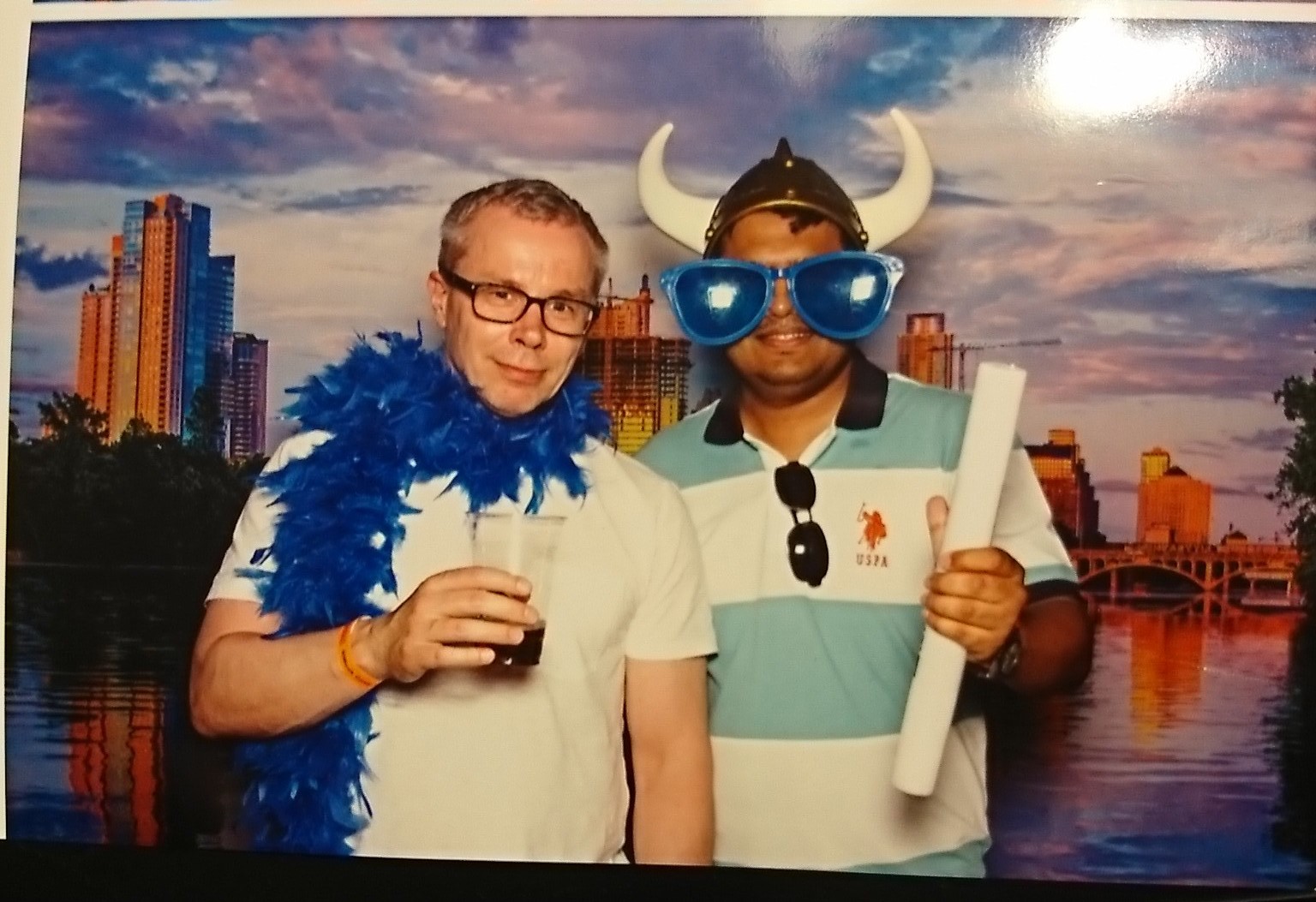
DVel was represented by Stefan and Alif this year at the big Test & Measurement conference NIWeek 2018 in Austin, Texas. Over 3000 engineers and scientists, from all over the world, met with National Instruments (NI) employees to discover new hardware and software being released.
The keynotes focused a lot on customer solutions using NI hardware and software. Big trends at the moment is 5G(Telecom), Automotive(Autonomous cars) and IoT(Internet of things). Especially interesting was to see how Mazda used the NI platform for simulation of many critical development tasks and thereby reducing development time by more than 50 %.
After the keynotes there were hundreds of different sessions to choose from. What caught my attention was a presentation by Darren Nattinger who talked and showed how you can customize your LabVIEW environment by writing scripting code to create your own LabVIEW features. See more of his presentation here.
Steven Loftus Mercer held a presentation about Malleable VIs, which is something that was introduced with LabVIEW 2017. By using these VIs, programmers can created type-flexible VIs. As a frequent LabVIEW user I heard of this functions before, but havn’t looked into it more closely. They are similar to polymorphic VIs, but are more flexible. There are built in Malleable VIs in LabVIEW 2018, such as the “Decrement Array Element.vim” in array palette.
For FPGA development there are numerous ways to simulate your code before actually performing a compilation, which can be pretty time-consuming if you have a large code base to compile. NI showed in a presentation several ways you can do simulation and also some new stuff in LabVIEW 2018 FPGA module such as the Xilinx IP integration node.
Jeff Kodowsky, together with Steven Loftus Mercer held a presentation about channel wires, and the use of these wires to transfer data/commands between parallel processes in LabVIEW. This is usually done using queues to transfer data between processes. By using channel wires these processes becomes more visible to the programmer, to gain a better understanding how different parts of the code communicates. A very crowded and popular presentation with two very well known NI employees in the LabVIEW community.
As always, a new version of LabVIEW were released during NIWeek. LabVIEW 2018, which also comes bundled with NXG 2.1 (Next Generation of LabVIEW), comes with a couple of new features. One of them are the support to call Python functions using a Python node. Also, there is now support to create packages to better maintain and distribute releases of LabVIEW software.
This was my first time going to NI Week in May, so imagine my surprise when the rain came pouring down, even for a short 30 minutes. This along with very comfortable temperatures made NIWeek 2018, as always, a very well organized and fun event to attend.
/Stefan Davidsson

Karin Hellqvist
CSO
